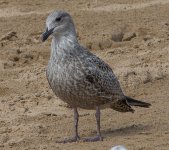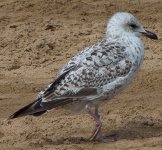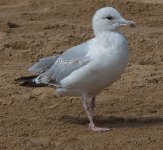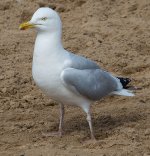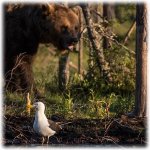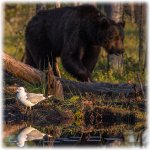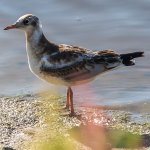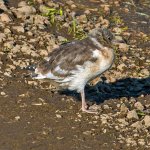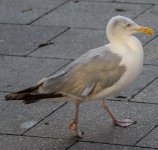Aladdin
Well-known member

Dear members and bird watchers
I have some different pictures of European Herring Gulls that I took in August in United Kingdom and Germany
Now I have tried to identify them but I´m very uncertain about the age.
Picture 1: Juvenile
Picture 2: Juvenile going to the first winter
Taken the same day and at the same place. Is the difference because the bird in picture 1 is born much later?
Picture 3: Bird going to the 2nd winter, pink bill with black dot
Picture 4: Bird going to the third winter and will have babies next summer
Picture 5: Adult breeding, and if I´m right the bill will turn pinkish and the red dot will fade. And grey coloured in the white when they turn in to non breeding plumage
Anyone that can be so kind to tell me if I´m right or wrong?
Kind regards and happy birding
Aladdin
I have some different pictures of European Herring Gulls that I took in August in United Kingdom and Germany
Now I have tried to identify them but I´m very uncertain about the age.
Picture 1: Juvenile
Picture 2: Juvenile going to the first winter
Taken the same day and at the same place. Is the difference because the bird in picture 1 is born much later?
Picture 3: Bird going to the 2nd winter, pink bill with black dot
Picture 4: Bird going to the third winter and will have babies next summer
Picture 5: Adult breeding, and if I´m right the bill will turn pinkish and the red dot will fade. And grey coloured in the white when they turn in to non breeding plumage
Anyone that can be so kind to tell me if I´m right or wrong?
Kind regards and happy birding
Aladdin




